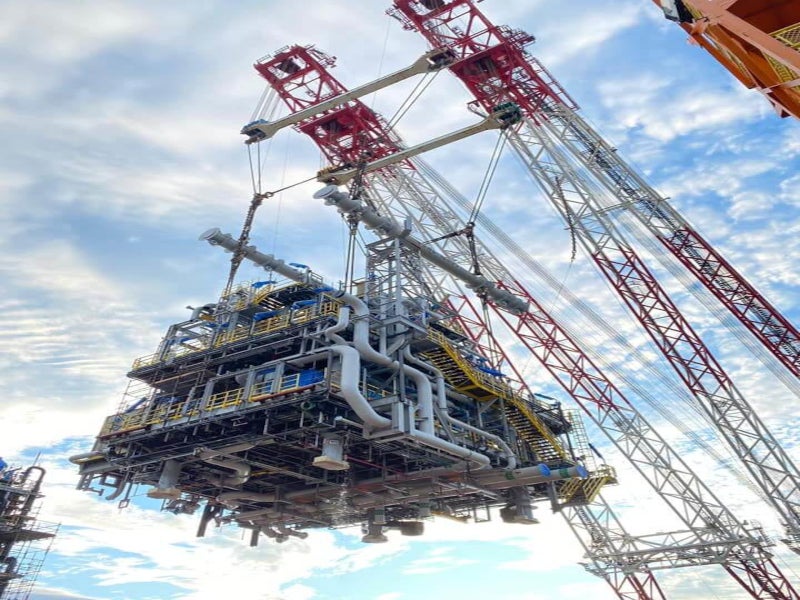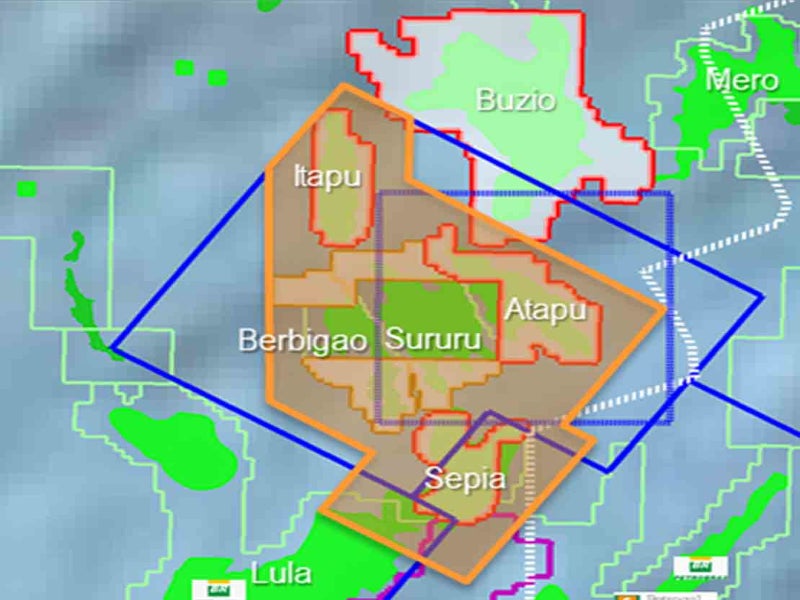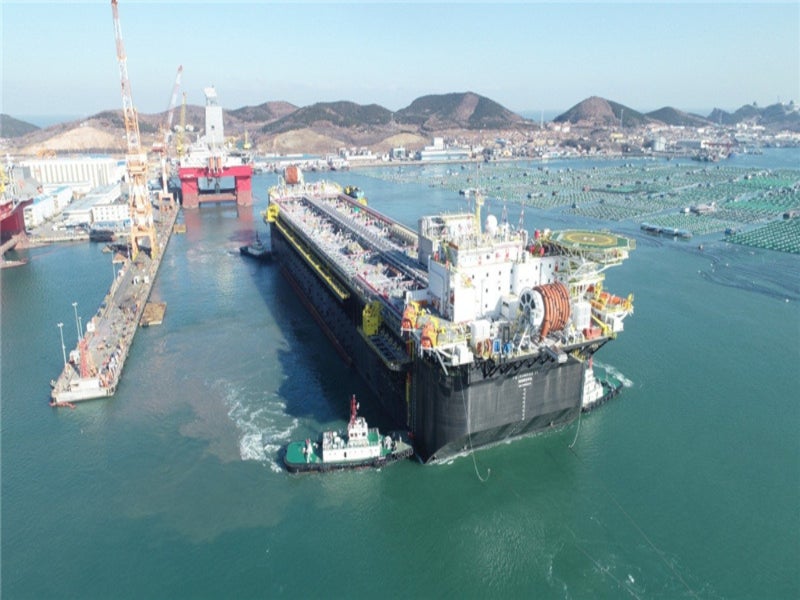The Itapu oil and gas field is located at a water depth of 2,000m in the Santos Basin pre-salt, offshore Brazil.
Previously known as Florim, Itapu is operated by the state-run oil and gas company, Petroleo Brasileiro (Petrobras), which acquired it through the transfer of rights auction conducted by the Brazilian Government in November 2019. The company holds 100% of the exploration and production rights in the Itapu field surplus volume.
Brazil’s National Agency for Petroleum, Natural Gas and Biofuels (ANP) approved Petrobras’ field development plan for Itapu in 2017. Itapu field has an estimated in situ oil volume of 1.3 billion barrels of oil.
Itapu oil and gas field location and discovery
The Itapu field is situated within Block 1 of the transfer of rights area in northern Santos Basin, approximately 200km offshore Rio de Janeiro. It was discovered by the drilling of the 1-BRSA-1116-RJS exploratory well (Florim, 1-RJS-704) in December 2012.
The discovery well intercepted good quality oil of 290 API in carbonate reservoirs located beneath the salt layer. It started at a depth of 5,342m and ended at 6,004m after meeting the objectives defined in the transfer of rights agreement. Further, a formation test confirmed the excellent productivity of the reservoirs.
In October 2016, the Brazilian Institute for the Environment and Renewable Natural Resources (IBAMA) awarded the installation licence for floating production storage offloading (FPSO) vessel BW Cidade de Sao Vicente for conducting the long-term test (TLD) of Florim well in the field. The licence was valid until September 2018.
Itapu field development details
The FPSO BW Cidade de Sao Vicente with the production capacity of 30,000 barrels of oil per day (bpd) and one million cubic metres of gas a day produced approximately 28,000bpd on an average during the TLD.
The development plan for the field includes five producing wells, two gas injectors, and two water injectors, which will be connected to the FPSO P-71. The vessel is expected to be delivered in the last quarter of 2022 and will start its activities at the field in 2023. The field is expected to continue its production until 2050.
The flexible pipes will be installed for production lines, water and gas injection lines, and services lines. The pipes will ensure the protection of the connections and the maintenance of flow under extreme temperatures, high pressures and corrosive conditions.
FPSO P-71 details
Petrobras reached an agreement to purchase the FPSO P-71 for $353m for the development of Itapu field in October 2020. The FPSO was supposed to be utilised at the Tupi field located in the BM-S-11 block in Santos Basin but was later allocated to the Itapu field after the transfer of rights surplus auction.
The FPSO is in its final phase of construction at the Jurong Shipyard, in the state of Espirito Santo in south-eastern Brazil. The 316m-long and 54m-wide FPSO has a production capacity of 150,000bpd of oil and six million standard cubic metres of natural gas. The platform can store 1.6 million barrels of oil and accommodate 160 people.
Contractors involved
Multi-national marine geophysics company PGS completed the Santos Basin seismic data revitalisation project, known as Santos Vision MultiClient, for Petrobras in December 2020. The project involved seismic data collection from the Sepia and Itapu fields and covered an area of approximately 49,000km² across 13 separate seismic surveys.
Estaleiro Jurong Aracruz (EJA), a wholly-owned subsidiary of Singapore-based shipbuilder Sembcorp Marine, received an amended contract worth $175m for modification works on P-71 for deployment at the Itapu field in June 2021.
The contract requires EJA to modify existing systems and integrate additional systems into the FPSO.
Baker Hughes received two contracts from Petrobras for flexible pipes in June 2021. One of the two contracts will involve the laying of up to 226km of flexible pipe for the Marlim 2 and Itapu fields.






